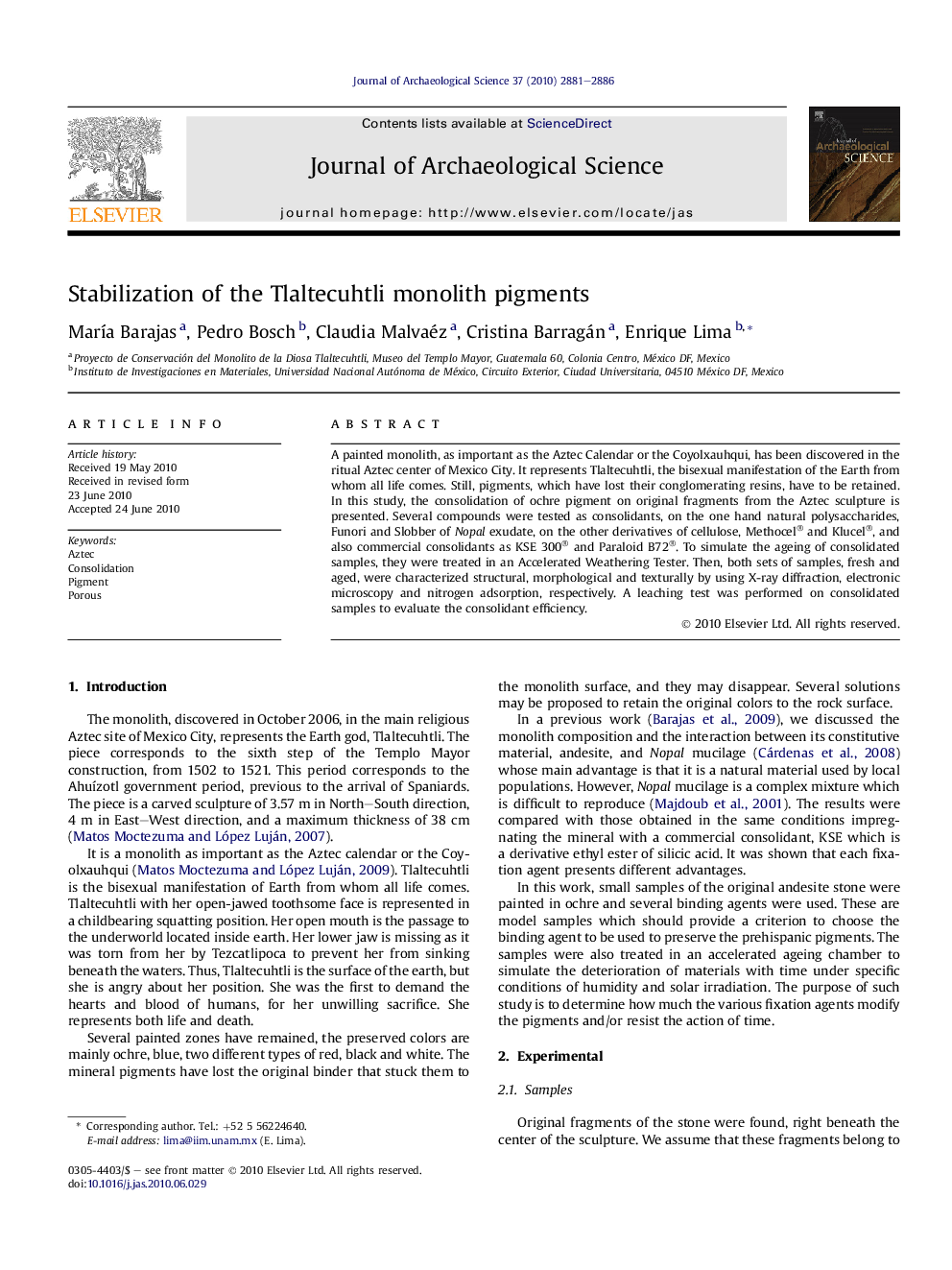| Article ID | Journal | Published Year | Pages | File Type |
|---|---|---|---|---|
| 1036484 | Journal of Archaeological Science | 2010 | 6 Pages |
A painted monolith, as important as the Aztec Calendar or the Coyolxauhqui, has been discovered in the ritual Aztec center of Mexico City. It represents Tlaltecuhtli, the bisexual manifestation of the Earth from whom all life comes. Still, pigments, which have lost their conglomerating resins, have to be retained. In this study, the consolidation of ochre pigment on original fragments from the Aztec sculpture is presented. Several compounds were tested as consolidants, on the one hand natural polysaccharides, Funori and Slobber of Nopal exudate, on the other derivatives of cellulose, Methocel® and Klucel®, and also commercial consolidants as KSE 300® and Paraloid B72®. To simulate the ageing of consolidated samples, they were treated in an Accelerated Weathering Tester. Then, both sets of samples, fresh and aged, were characterized structural, morphological and texturally by using X-ray diffraction, electronic microscopy and nitrogen adsorption, respectively. A leaching test was performed on consolidated samples to evaluate the consolidant efficiency.
